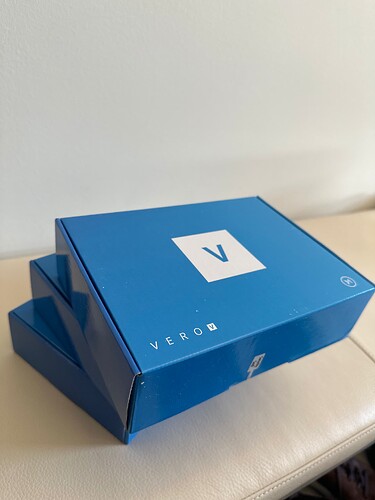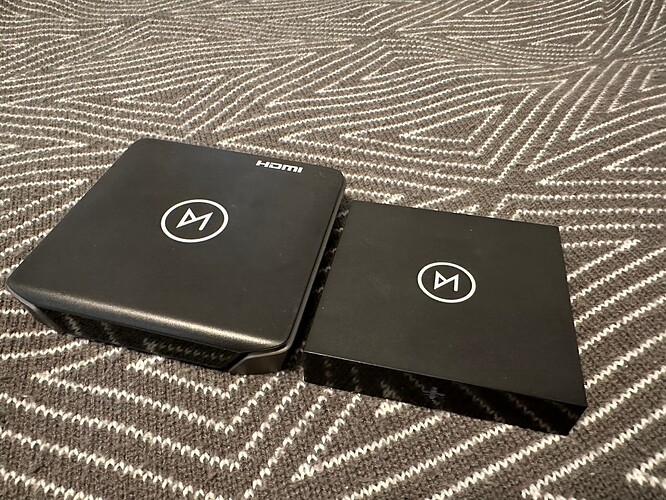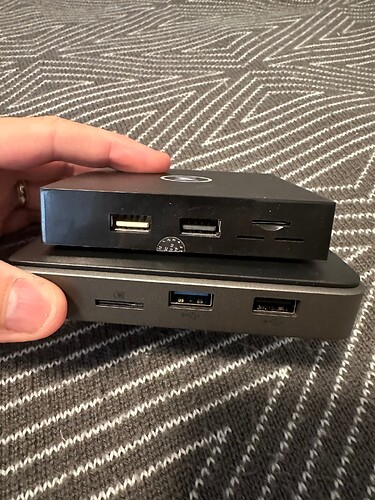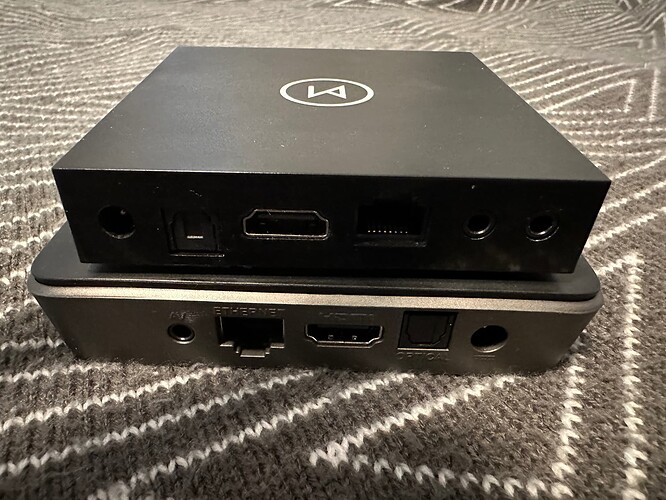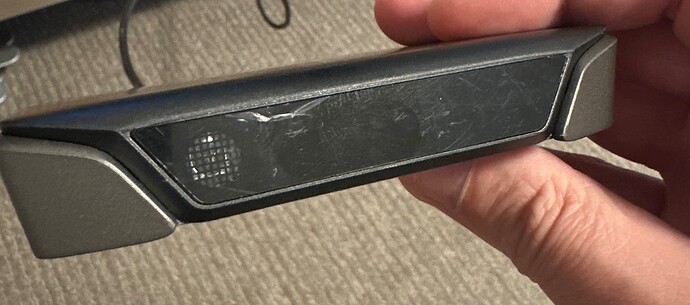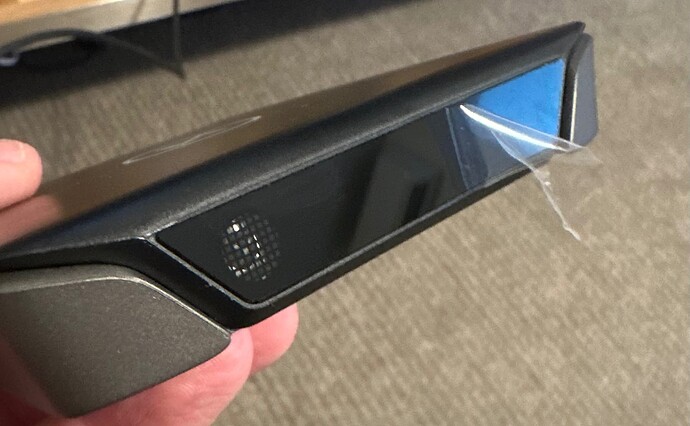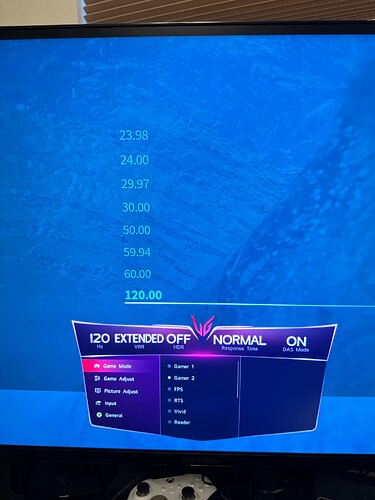The Vero V is finally here! It’s hard to believe the Vero 4K+ is 5 years old now - as of August, 2023. FIVE! Where have the years gone? Oh… right… Let’s try to forget the beforetimes, shall we?
Now, before I get into it, I want to say that despite getting the Vero V in a little early, I paid full price for them, gladly. I wasn’t bribed to write a review. I’ve been a huge fan of the Vero line for some years, and wanted to help out/provide some feedback before launch. So, these opinions are 100% mine, and I’m not afraid to call it like it is. So here goes!
From a raw specs standpoint, this is a significant upgrade from the Vero 4K+, as you’d expect it to be, given the 4K+ released in Summer, 2018.
Here’s a small snippet of the hardware specs:
OSMC Vero 4K+
• Quad Core 1.6Ghz 64-bit processor.
• 2GB DDR3 RAM and 16GB eMMC storage.
• Built in 802.11 ac/b/g/n WiFi with Bluetooth 4.0.
• IR and RF receiver.
• 2x USB 2.0 ports.
• micro SD card slot.
• 3.5mm analog audio output.
• Optical (SPDIF) audio output.
OSMC Vero V:
• CPU: 4x ARM Cortex-A55 @ 2Ghz (S905X4-O).
• Built-in RISC-V core for OSMC SecureOS Trusted Execution Environment.
• GPU: 2x ARM Mali G31 @ 850Mhz with OpenGL ES 3.2, Vulkan 1.1 and OpenCL 2.0
• RAM: 4GB LPDDR4 @ 2133Mhz.
• HDMI 2.1.
• eMMC: 32GB eMMC via SDIO bus.
• micro SD card slot.
• USB 3.0 (finally!) + USB 2.0.
• Built in 802.11 ac/b/g/n WiFi with Bluetooth 4.0.
• Optical (SPDIF) audio output.
• Built-in IR/RF.
The full specs are here:
The Vero V cardboard box is blue. I like blue. You can always tell something will be great when it comes in a blue box (probably).
There’s a small security seal on the box, and then you’re in. Box contents are (at least for the USA!) a smaller, higher quality plug than with the 4K/4K+ line (5V/2A), a remote (exactly like the 4K+), and an HDMI cable. There’s no longer an IR extension cable included in the box as there was with the 4K/4K+, as the Vero V does not support this any longer.
The Vero V is larger than the 4K line, but probably few will care. In terms of design the Vero V is an evolution, both in terms of plastics and design. The 4K line always felt a bit…cheap and cheerful, with the glossy plastics around three of the sides, always getting scratched up from plug/HDMI insertions etc. The Vero V, while far from feeling what I would call “premium,” takes it up a notch. It has a pretty neat claw design around the front, and overall looks quite a bit better from a construction standpoint. Sure, none of this probably matters for many, since you’re going to throw this in your media cabinet and likely not see it again until the next upgrade. Like its predecessors, this is a passively-cooled device.
The one potential downside will be for those Vero 4K owners that used the keyholes on the underside of those units for, say, mounting in a rack or to the back of a TV. The Vero V has no such mounting method.
I personally appreciate that the internal board has the HDMI port mounted the “correct” way up (ahem, BAD Vero 4K+!!).
A couple of notes:
1.) No, the front panel on the Vero V is not scratched out of the box. It’s a piece of protective film, so feel free to peel it off for that clean look.
2.) The remote control has a transparent plastic tab fully under the battery cover that needs to be removed before the remote will work. This is the same RF remote as before. While it might have been nice to see an update, this remote works just great (though I pretty much always use my Logitech Harmony Elite).
In terms of setup, this is a doddle. As shipped in ~August 2023, the unit boots straight into Kodi V20 in seconds. You’ll then set your timezone, location and that’s it, - you’re ready to customize away. If you do a lot of rebooting it’s worth noting that the Vero V is substantially faster booting than the Vero 4K+, and back-to-back testing with my same installation on both, here are my results, repeated 3x each for consistency:
Vero 4K+ boot time: 29 seconds
Vero V boot time: 16 seconds
This makes rebooting or testing new versions of addons just that much smoother/quicker. In addition, once the OS is loaded, navigation is smoother on the V, with far fewer hitches present than on the 4K+. This is a noticeably more powerful device, and it shows in pretty much every aspect of usage. I popped in my stress test video, - which has to be the UHD Blu-ray (4K/60fps) of Billy Lynn’s Long Halftime Walk, and whereas the Vero 4K+ would occasionally struggle on this title, the Vero V screams through this without a dropped/skipped frame. Dropped or skipped frames are my nemesis (see my post history if you want to be miserable alongside me). The Vero 4K+ did a very good job in general with this, on even the most troublesome of media, but there would occasionally be that frustrating dropped frame, just once in a while. With the V, the power overhead is substantial, and thus far playback has been utterly flawless.
In addition, power consumption is stellar here. As tested with my meter, the V tends to idle in Kodi using the default Kodi Skin (Estuary) at around 2.5-3.5W, and even while running Billy Lynn’s, power consumption never went above 4.5W. Super.
A couple of other things:
1.) There’s zero coil whine/electrical noise from the Vero V, in case anyone was curious.
2.) With HDMI 2.1, 1080p/120fps is supported.
3.) I really recommend that everyone updates the Vero V software via the OSMC application upon receipt, as there are some important fixes in there since the unit shipped.
4.) My OCD goes completely wild with the underside of the Vero V. What has been seen… cannot be unseen! No! Make it go away!
Overall, minus a display bug that was astonishingly fixed by Sam (while on vacation and without even access to the device!) via a quick software update, my experience has been nothing short of stellar. And for those wondering why I bought three, well, - one for the bedroom, one for my projector/movie room, and one because I wuv the OSMC Team, and want to support them. I had a suspicion the Vero V wouldn’t disappoint, and I’m glad to say this suspicion was on the money. The Vero V is a fantastic piece of kit, and those on the fence should find now the time to jump in. Those already with a 4K or 4K+ unit will find a significantly speedier unit in every aspect of usage, and OSMC’s post-sales support is legendary. The Vero 4K+ is 5 years old now, and still sees constant updates, far beyond what was originally promised.
Alright, back to movie-watching!
